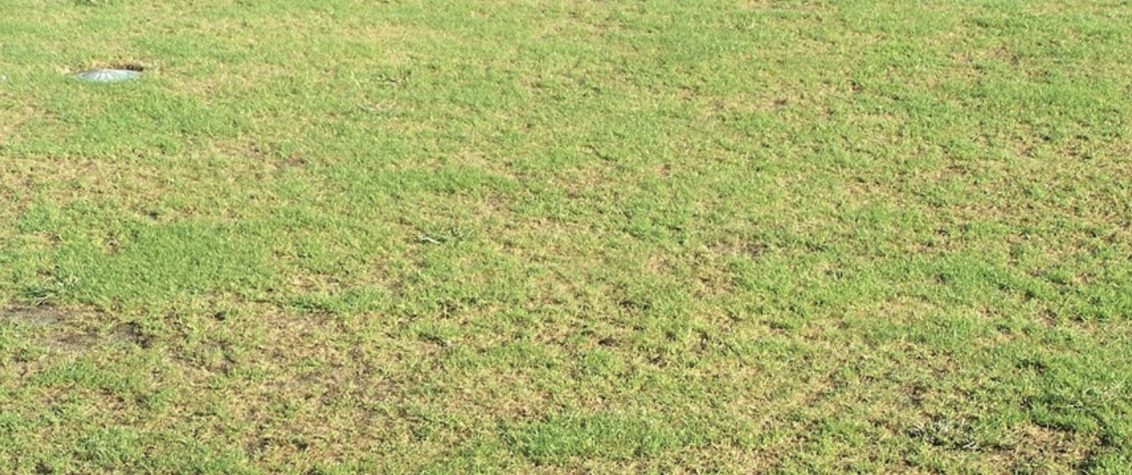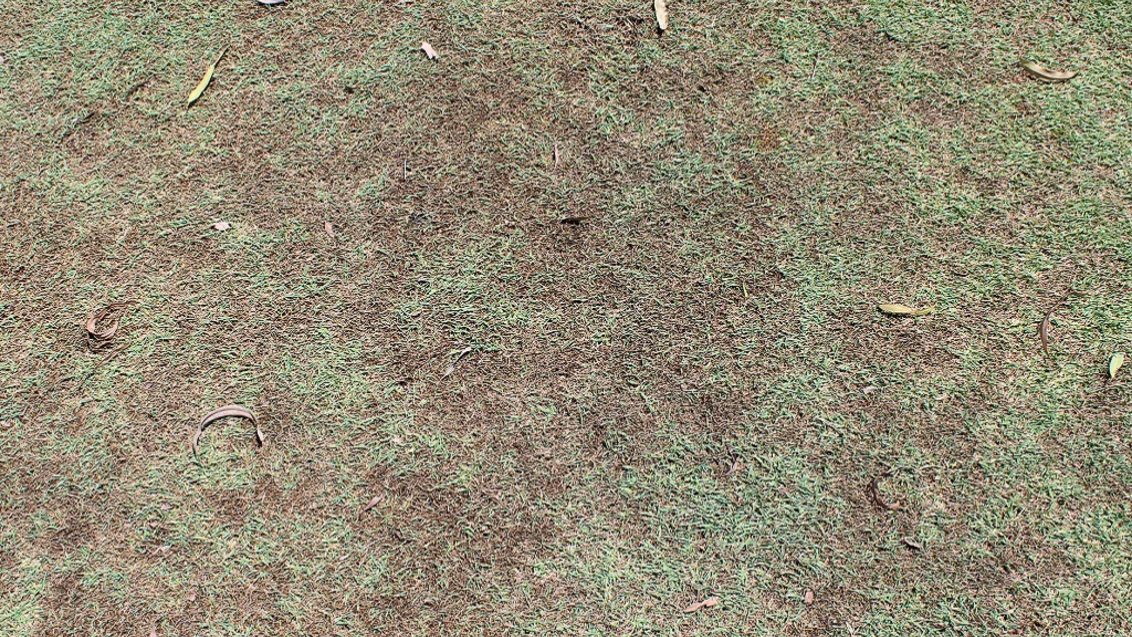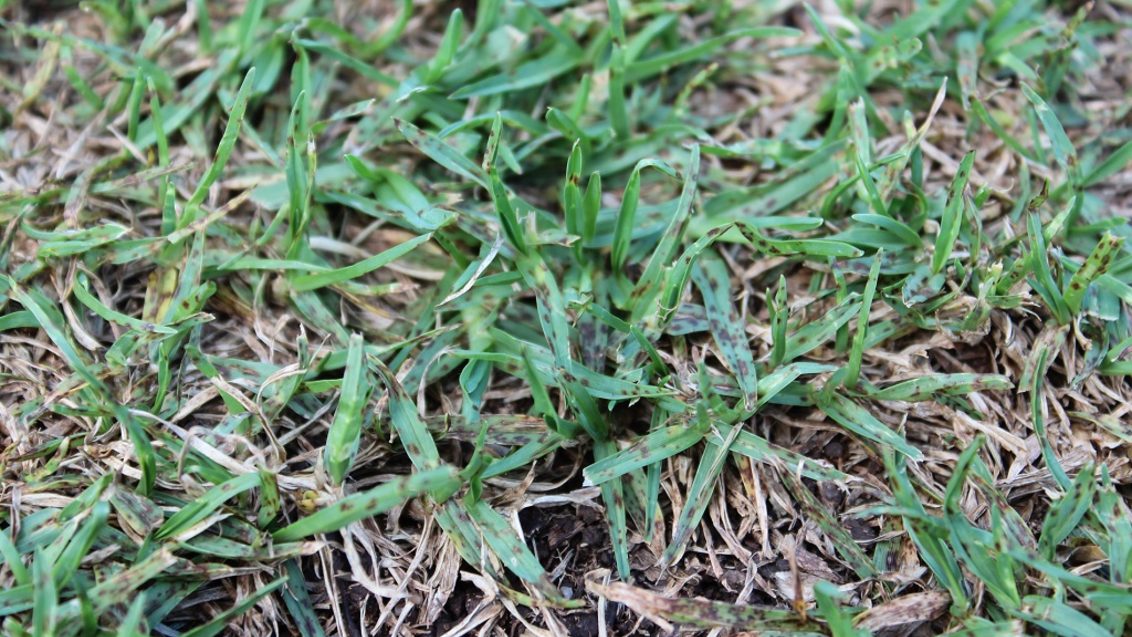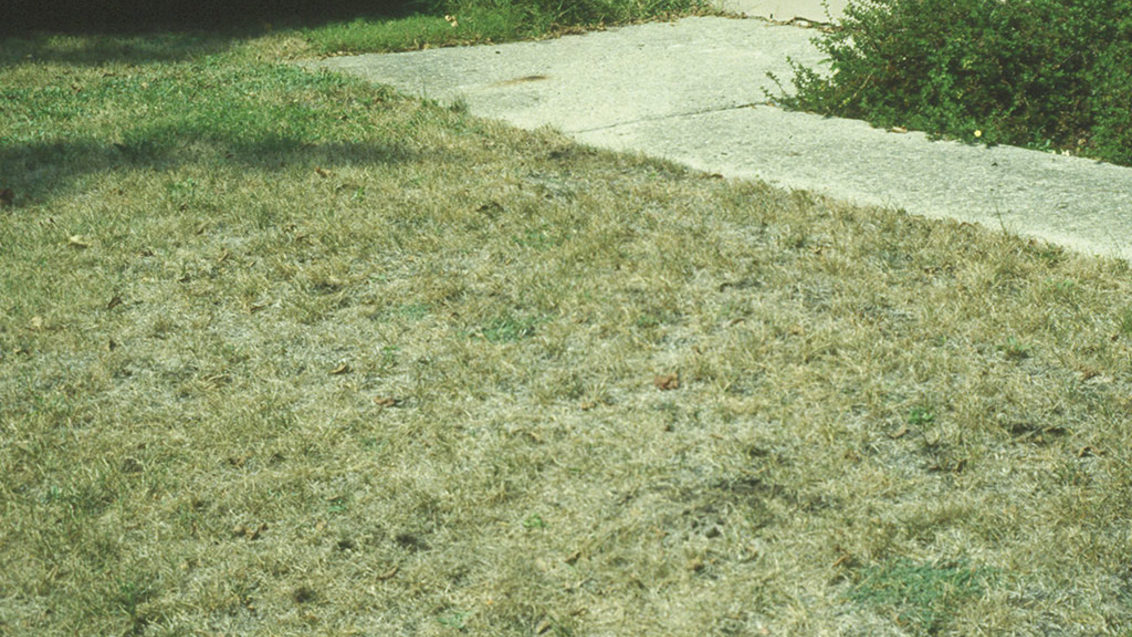Leaf Spot / Melting-Out
Turf Disease
Susceptible turfgrasses: Creeping red fescue, Kentucky bluegrass, annual bluegrass, perennial ryegrass, tall fescue and some varieties of bentgrass and Bermuda grass.

Description
Leaf spot (melting-out) causes purplish-brown to black spots with tan centers on the leaf blade and sheath. The lower leaves of the infected plants become shriveled and blighted. When melting-out infection is severe, almost all of the leaves and tillers die, causing severe thinning of the stand-or melting-out. On cool-weather turfgrass, melting-out typically follows the appearance of leaf spots.
Conditions favouring disease
Leaf spot is more commonly found when temperatures reach between 4°C and 26°C and in areas that experience more than 10 hours of foliar wetness daily for several days. It also favours high amounts of nitrogen and a low mowing height.
Integrated turf management
Increase the height of cut.
Reduce turf stress by using lightweight equipment.
Avoid the application of high rates of water-soluble nitrogen in the spring.
Minimise the amount of shade.
Irrigate turf deeply and as infrequently as possible.
Reduce thatch in the early spring or autumn for cool-season turfgrass and in the summer for warm-season turfgrass.
Fungicidal control
Banner, Daconil WeatherStik and Heritage have label recommendations for leaf spot/melting out in South Africa.
Bipolaris and Drechslera (previously classified as Helminthosporium fungi). Helminthosproium spp. are on the Daconil label.






